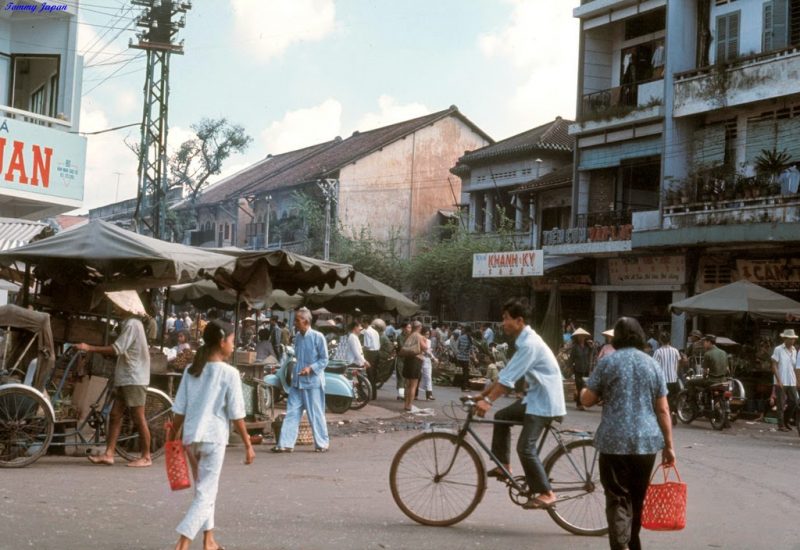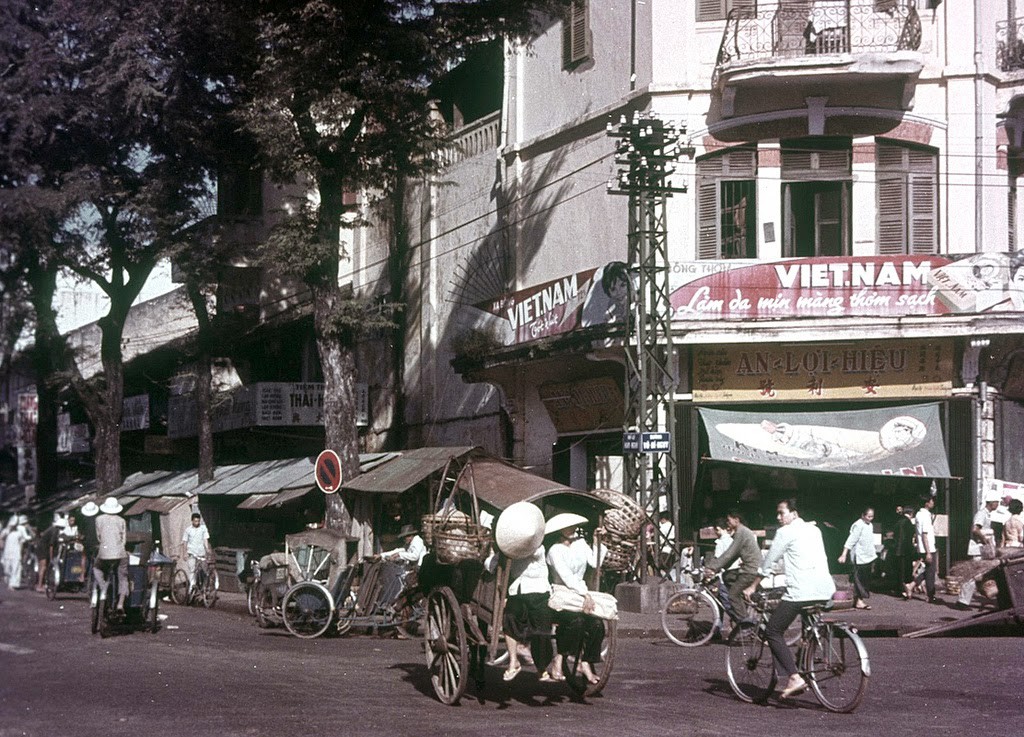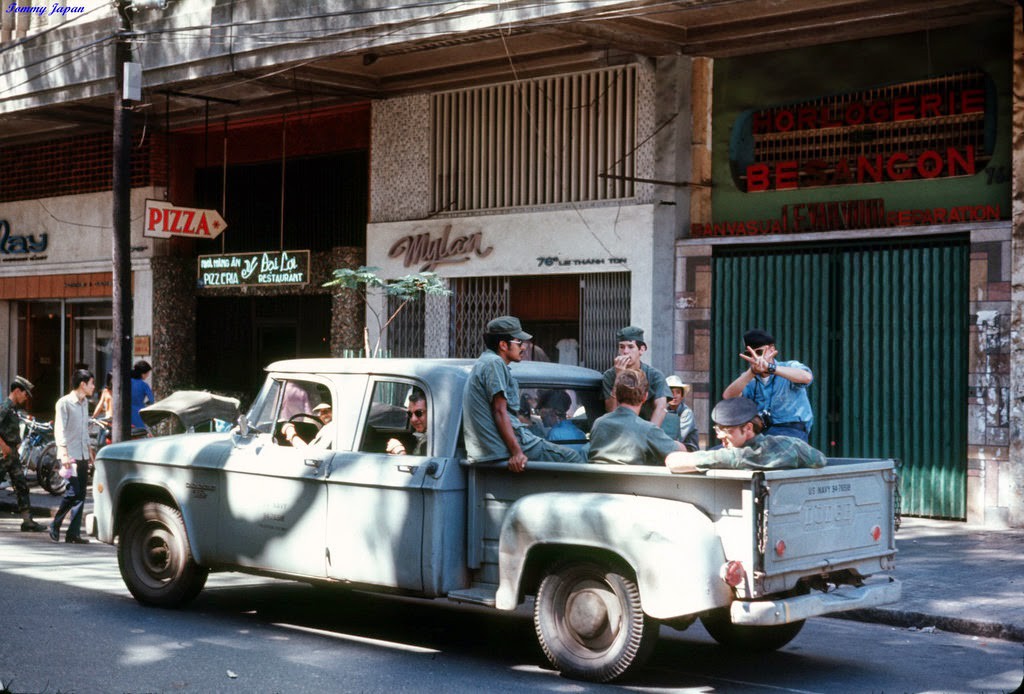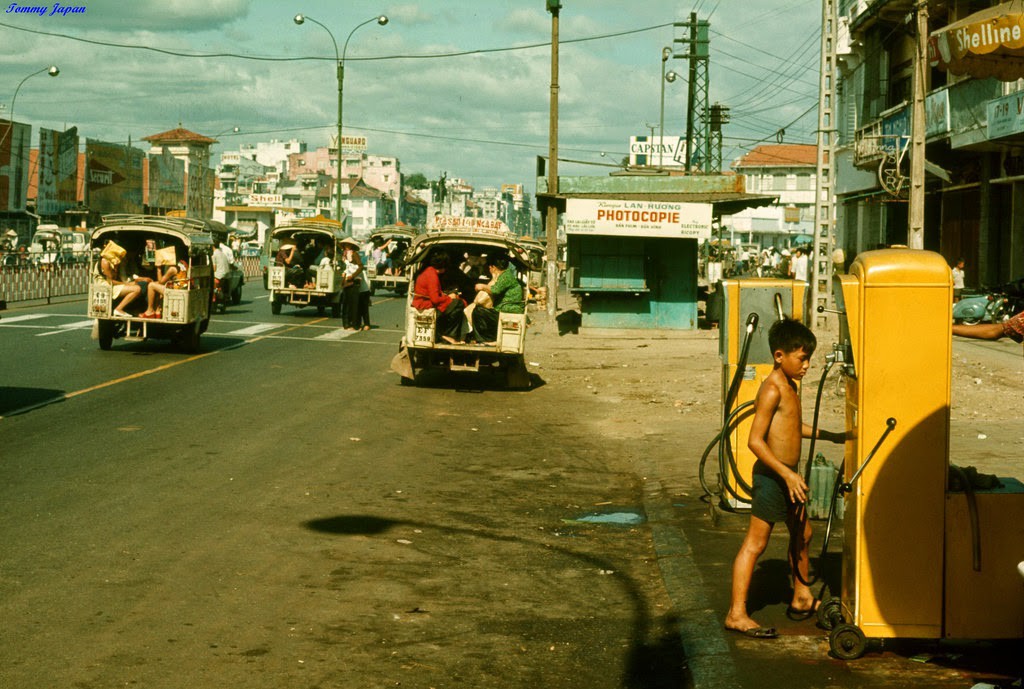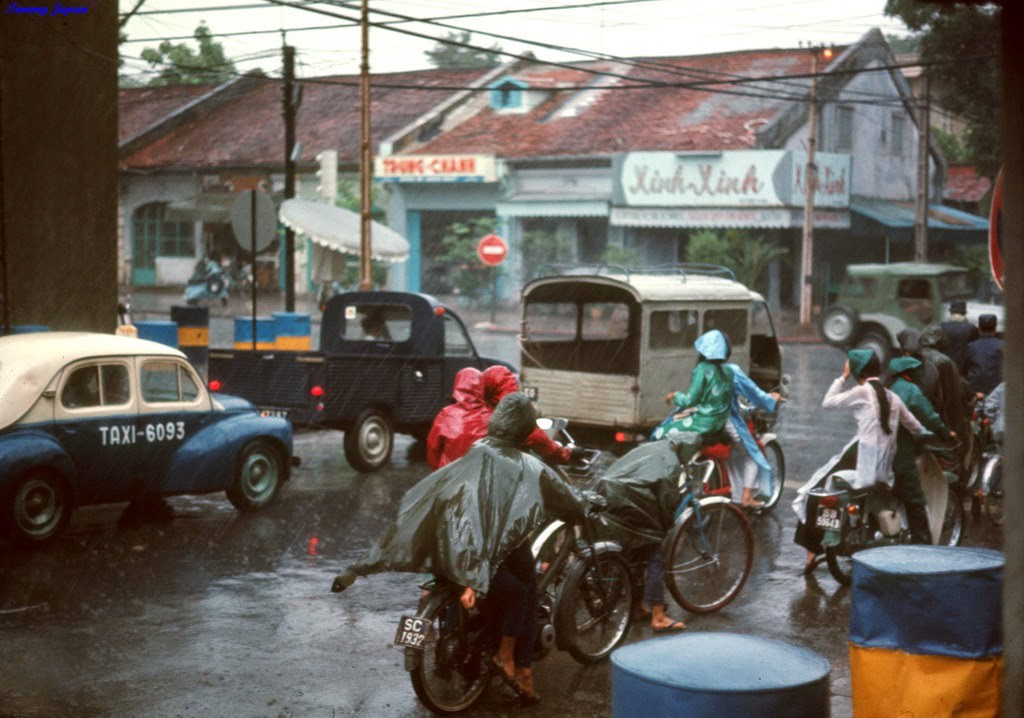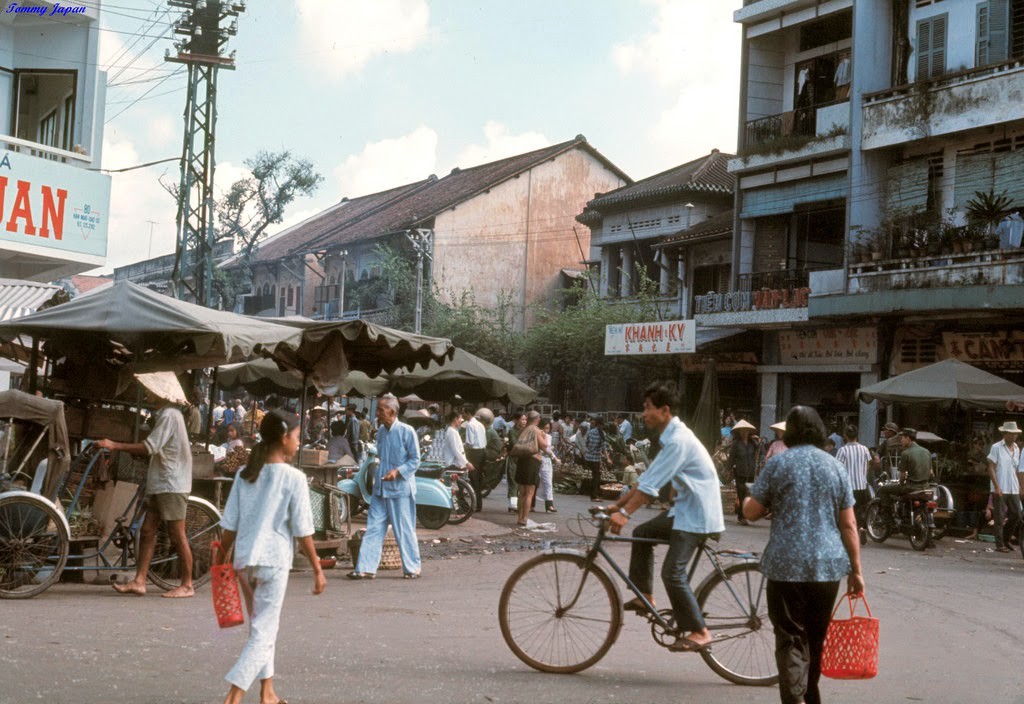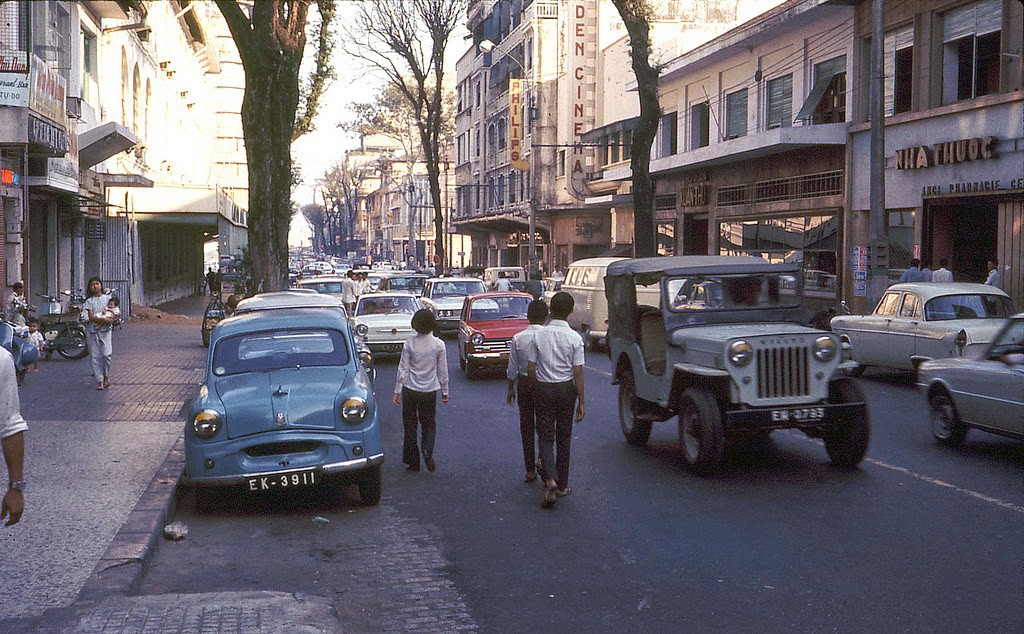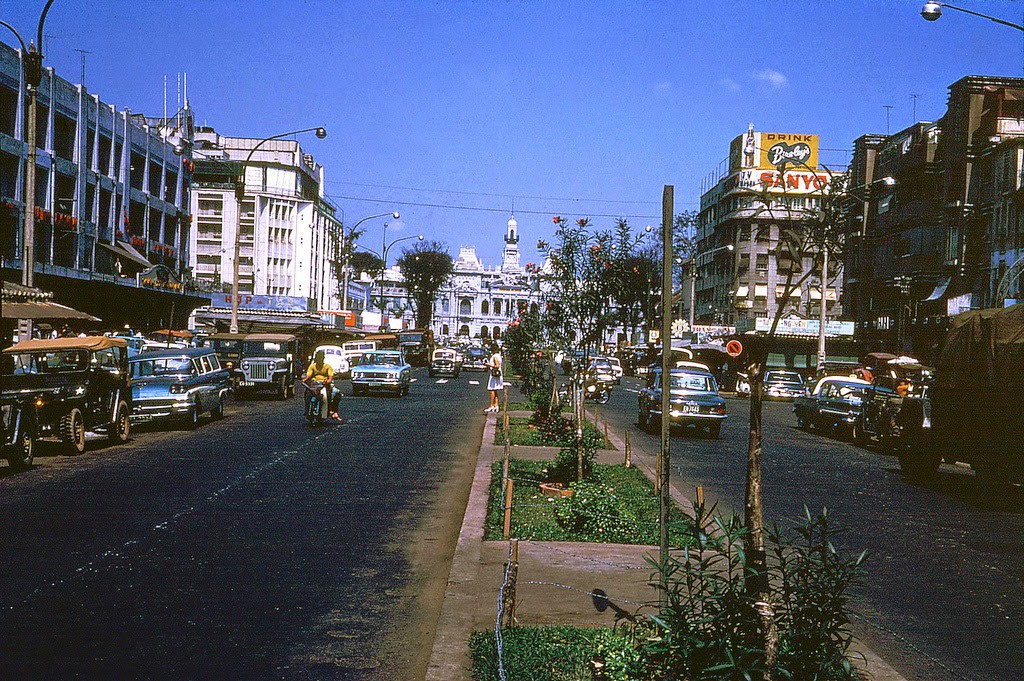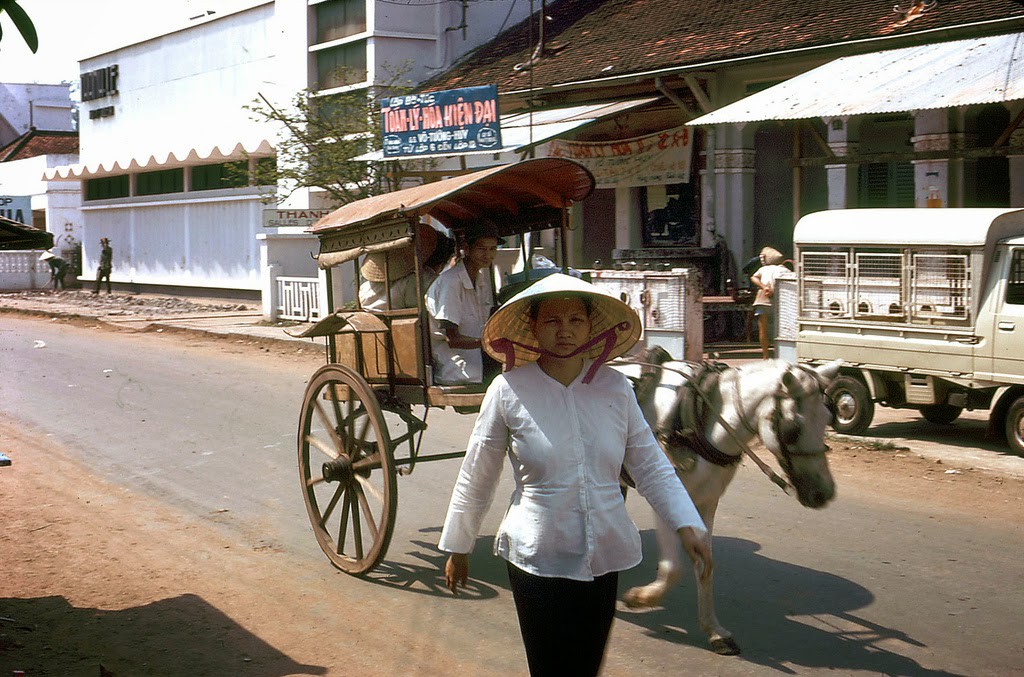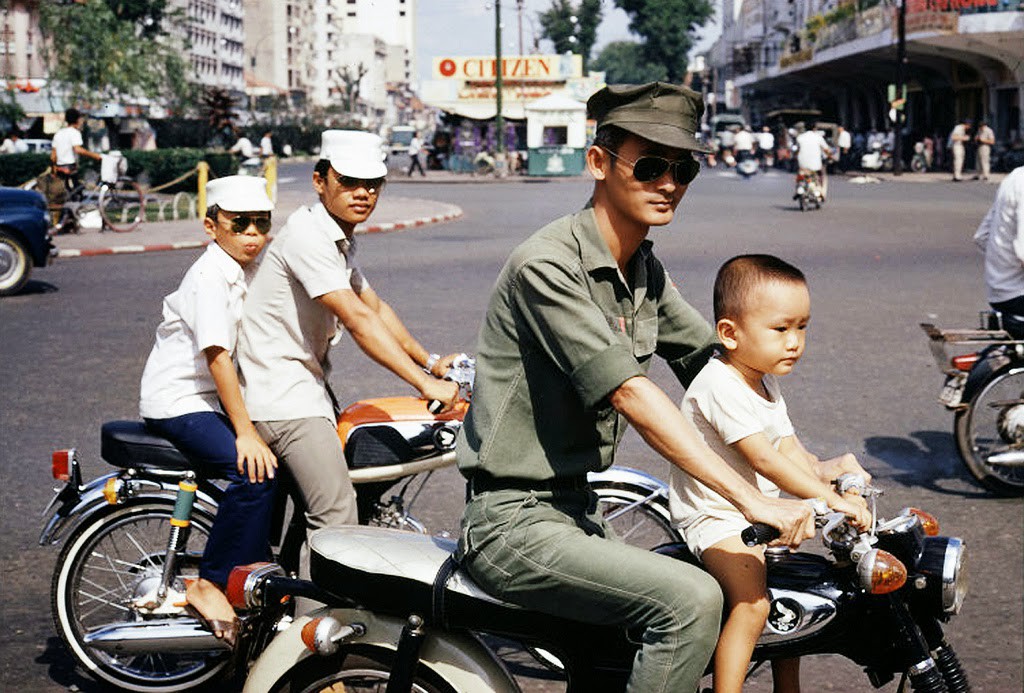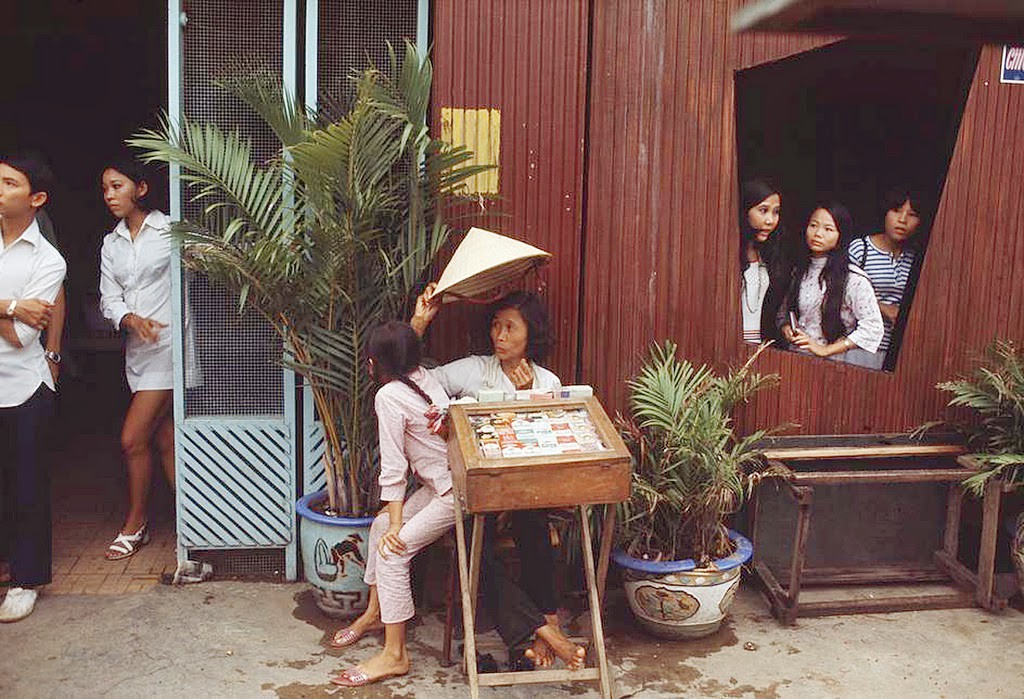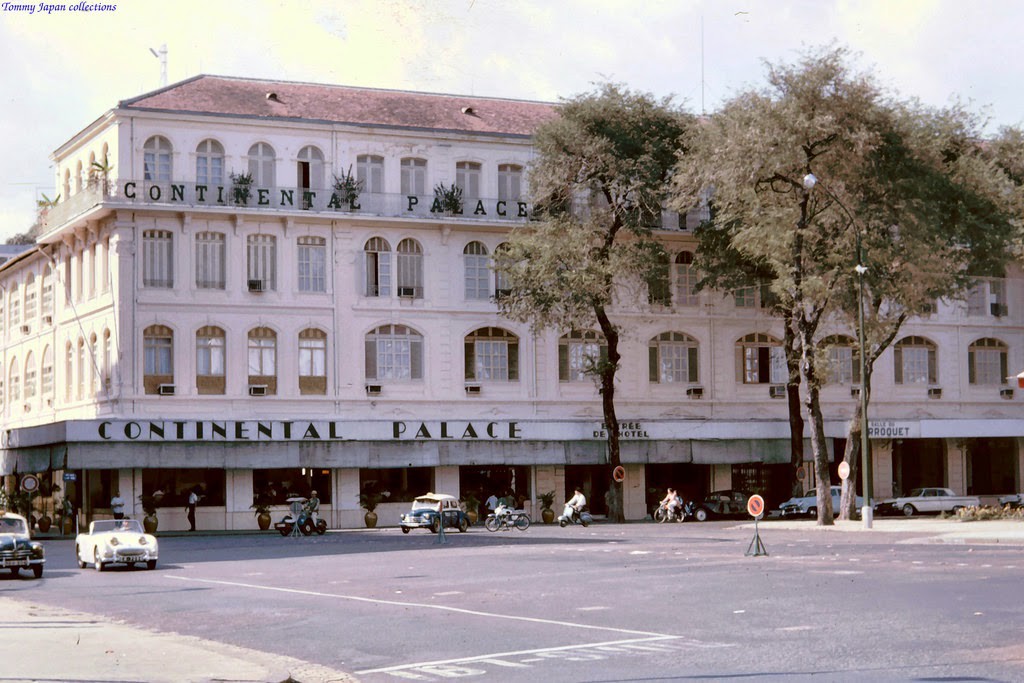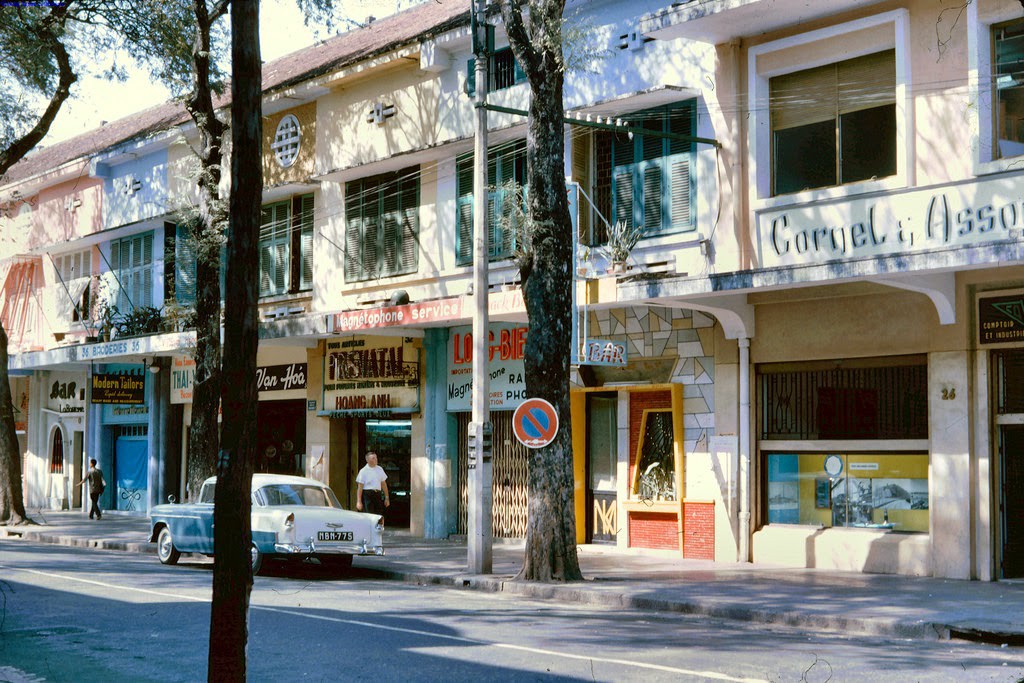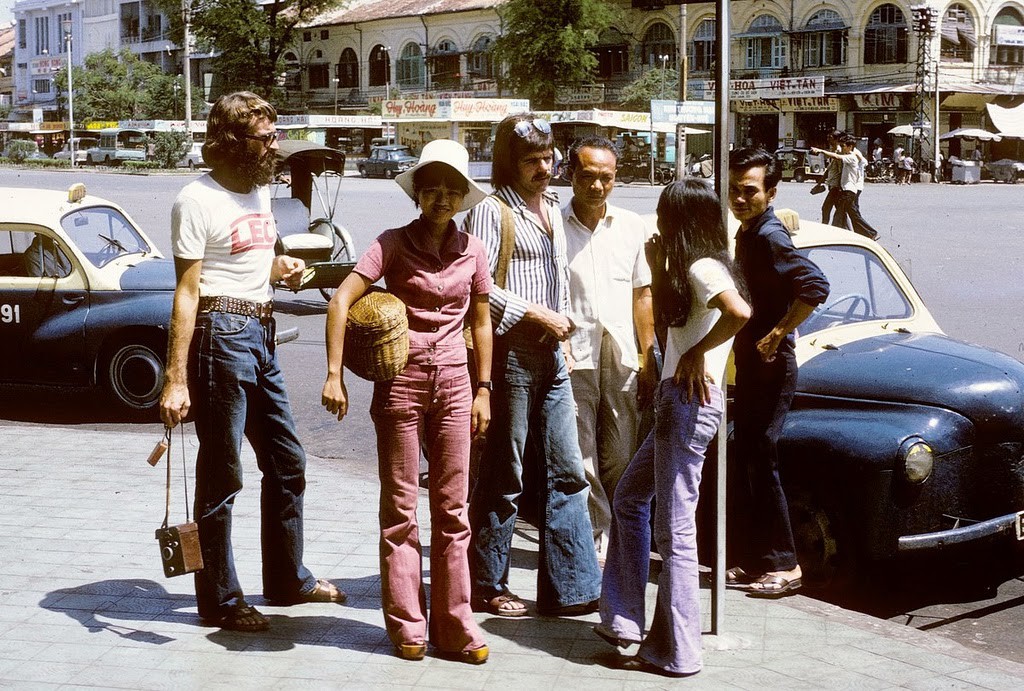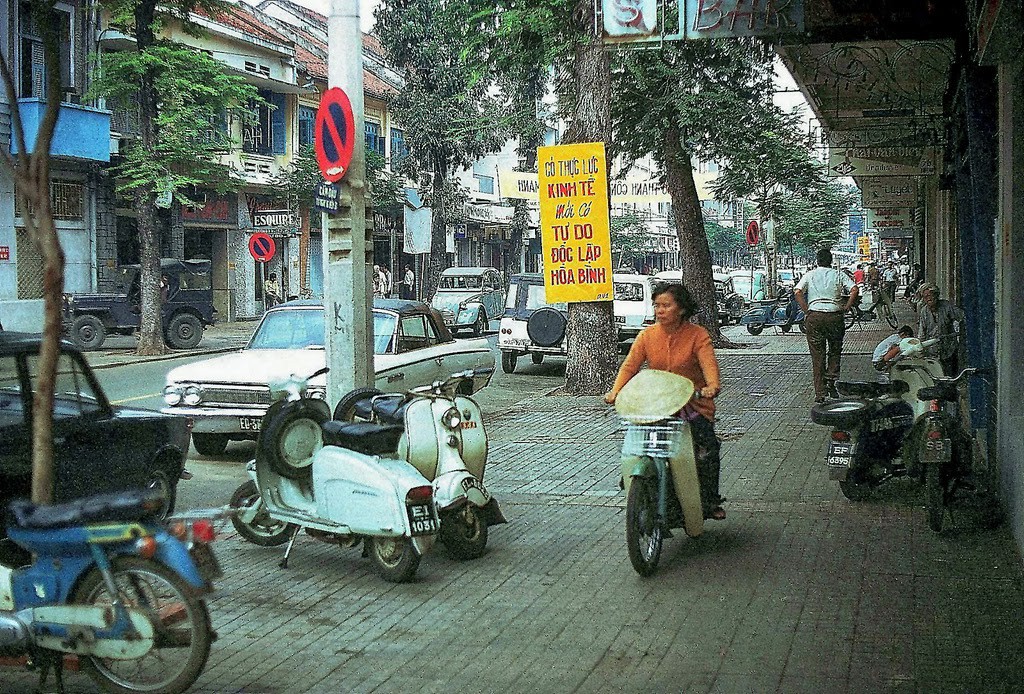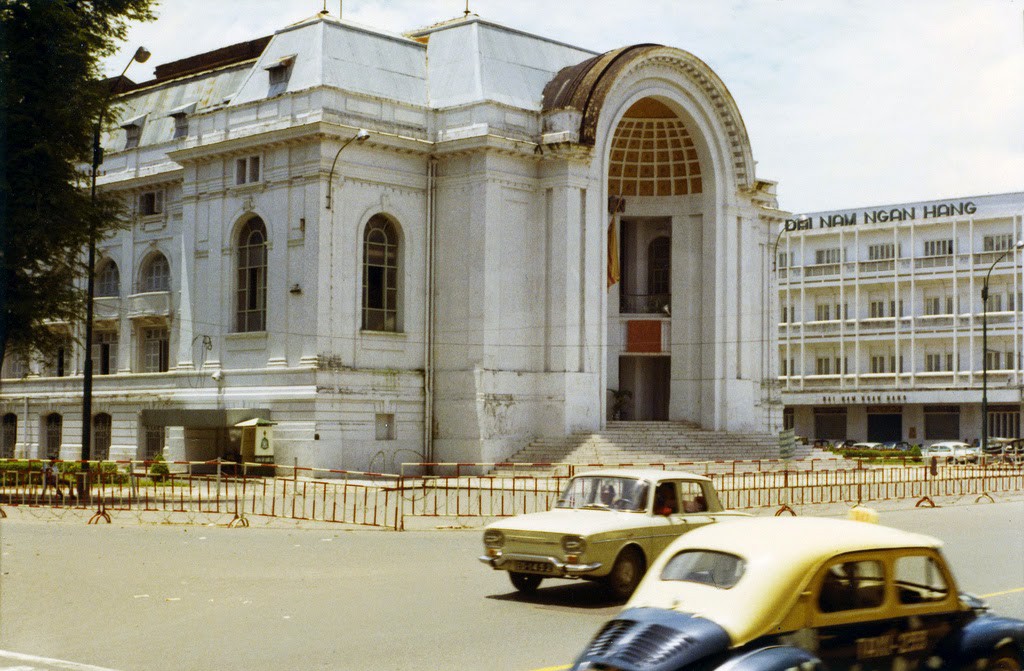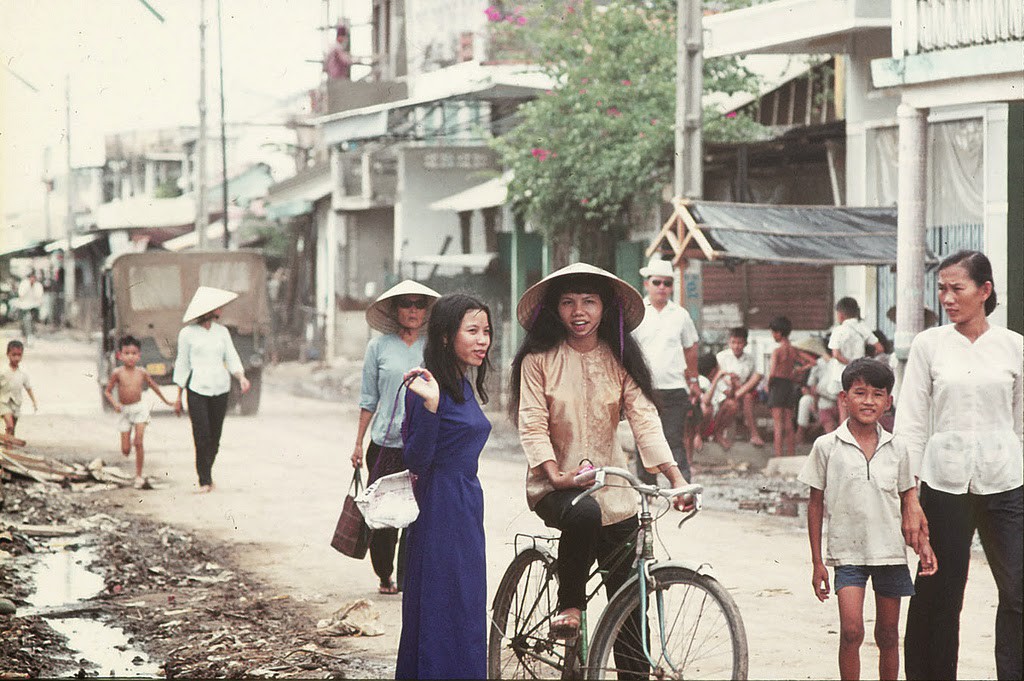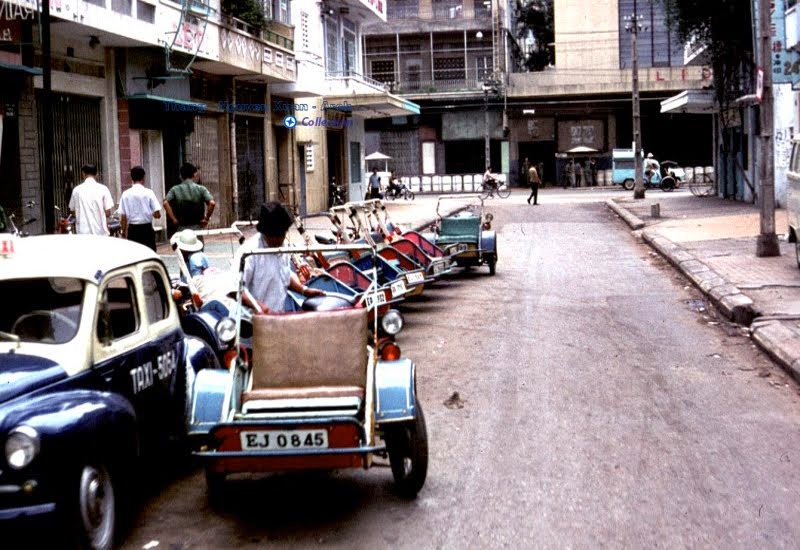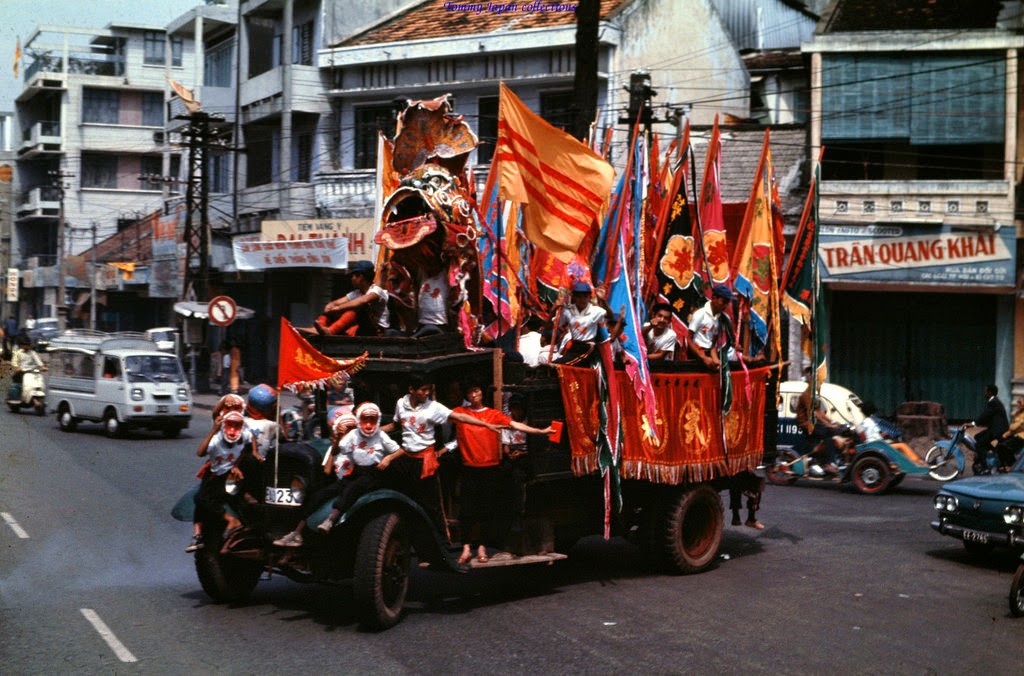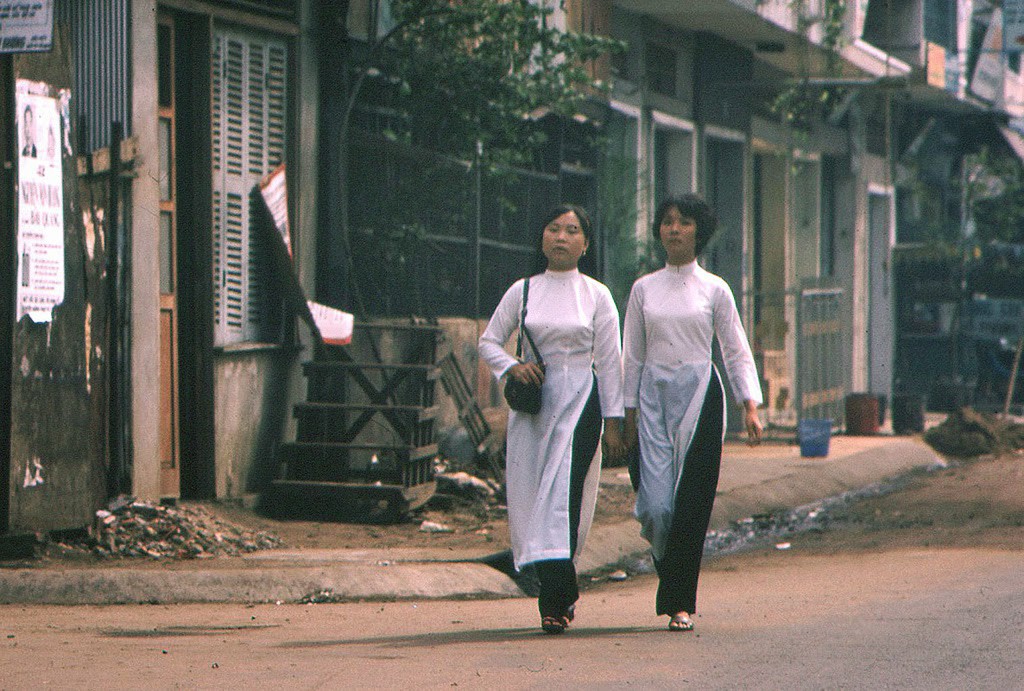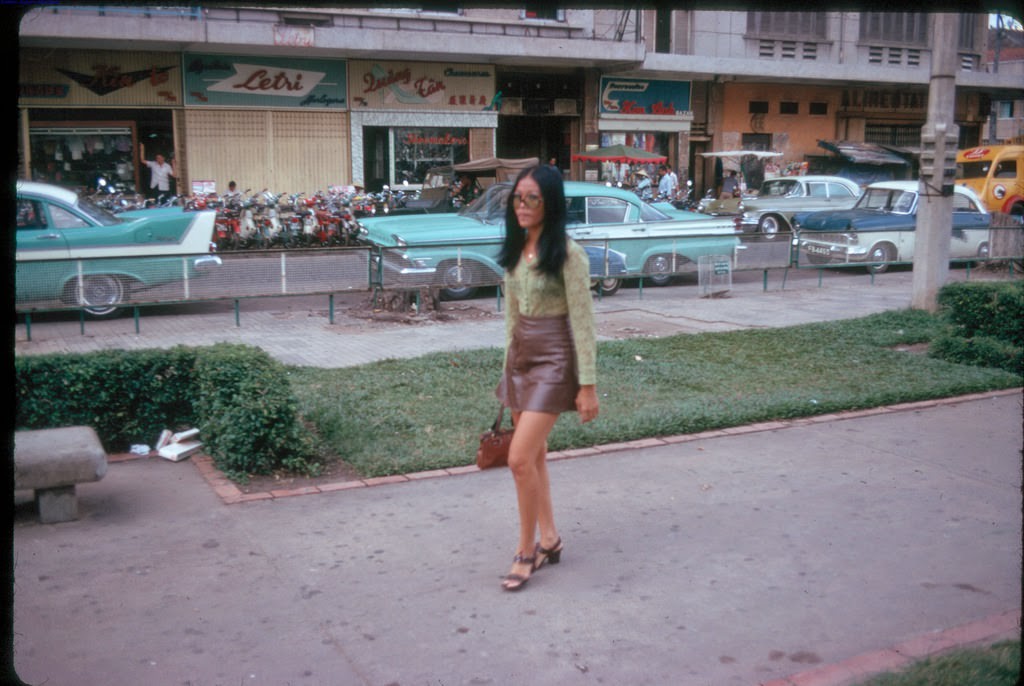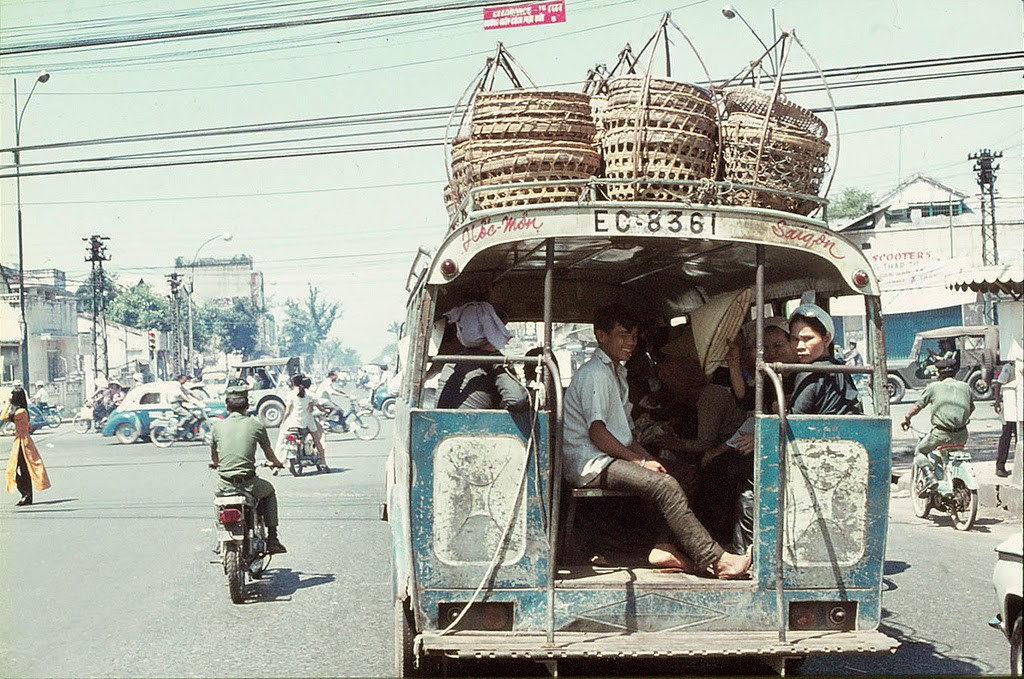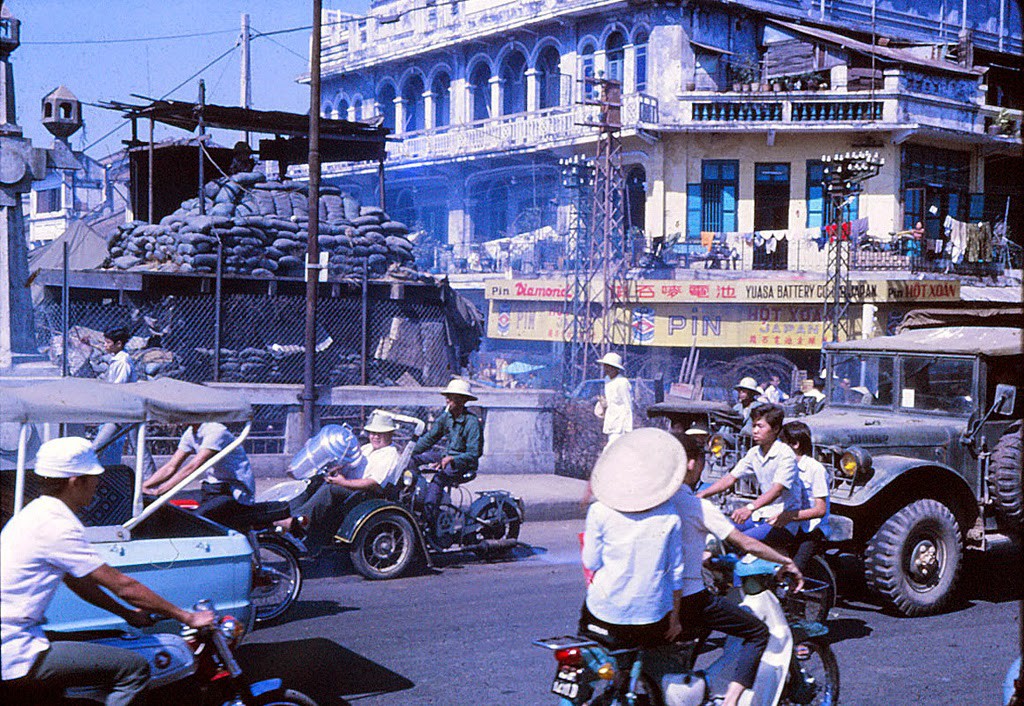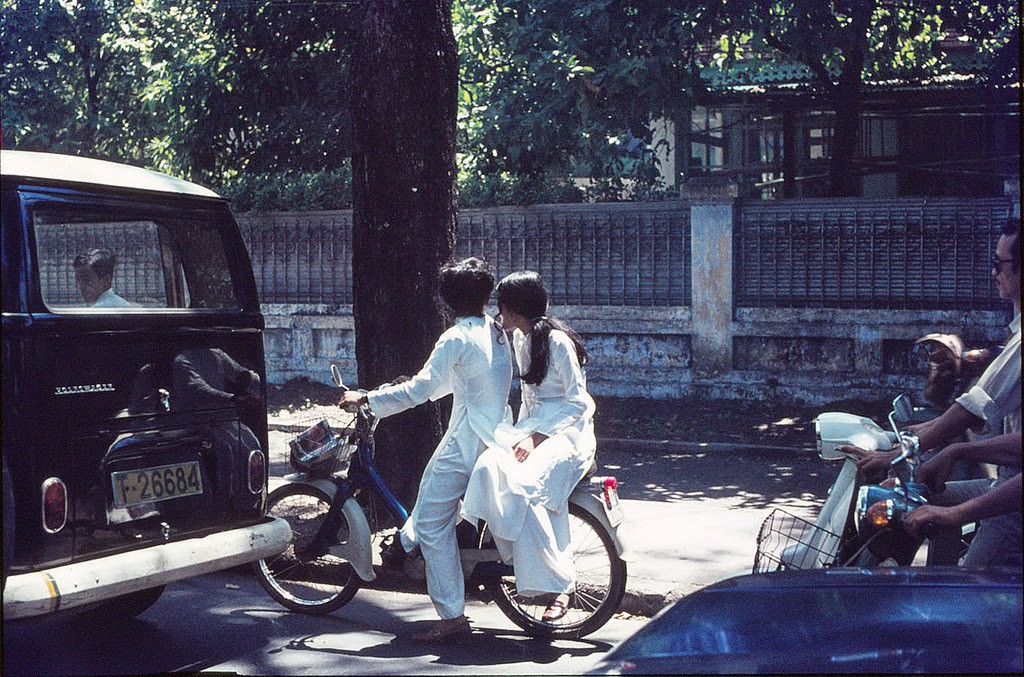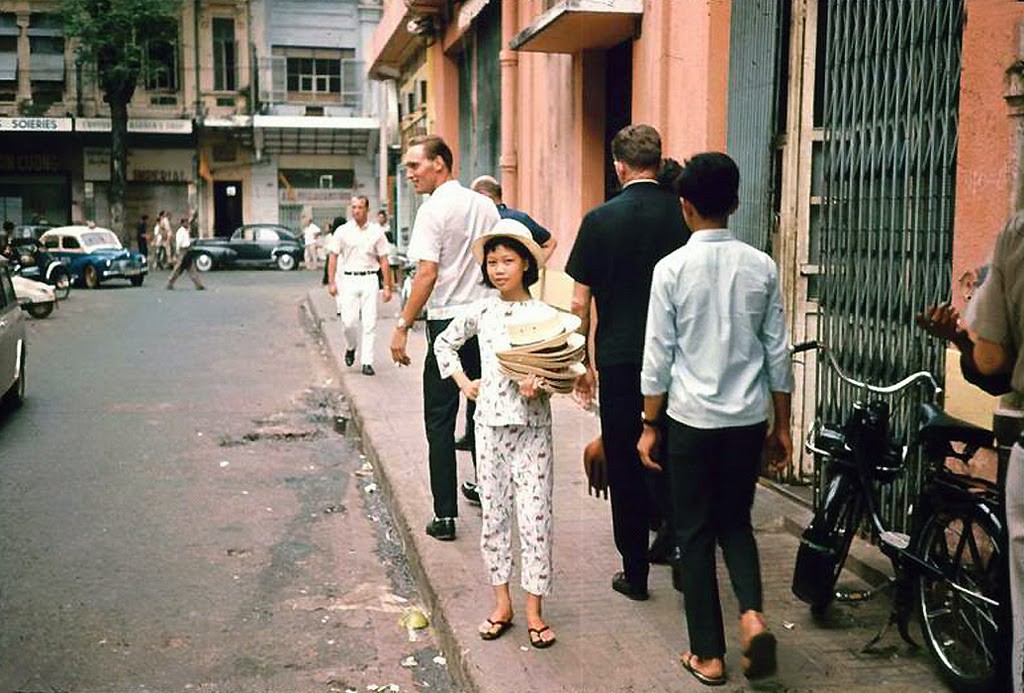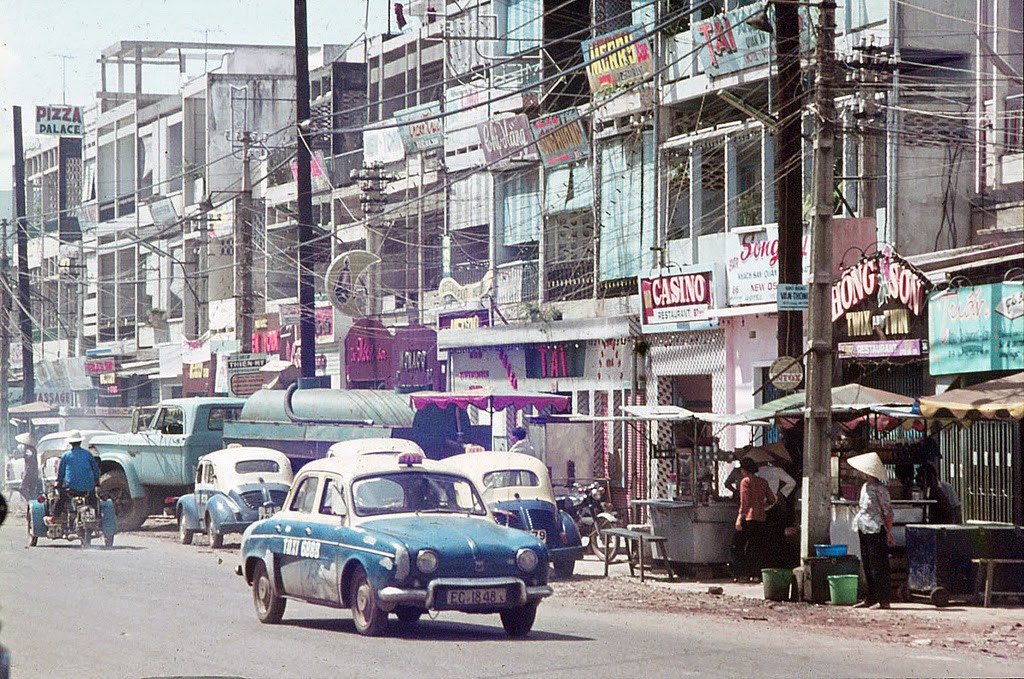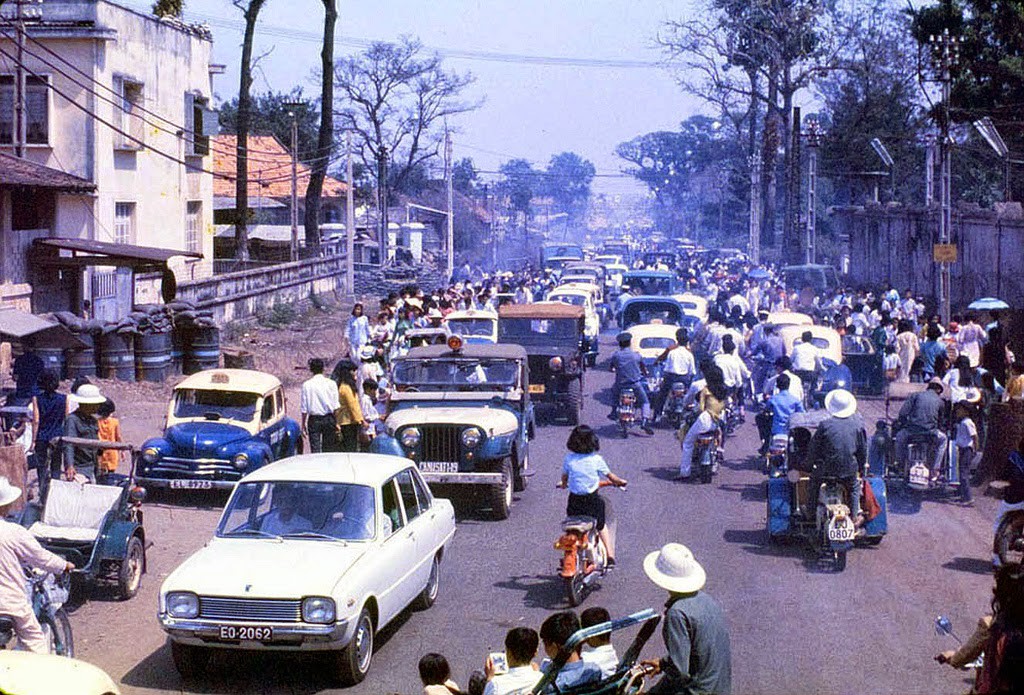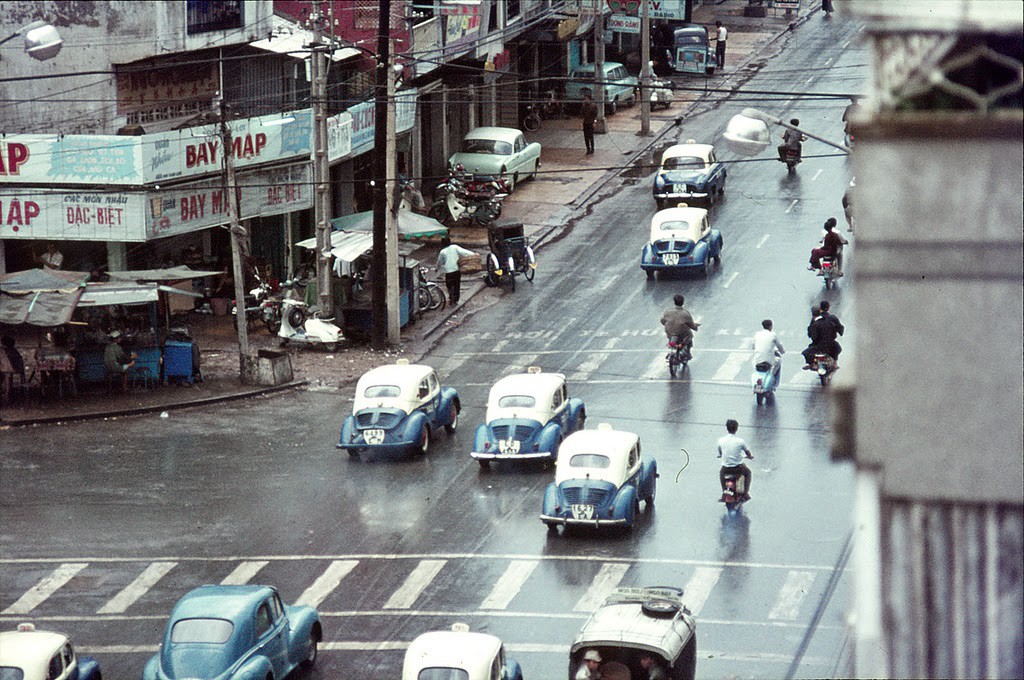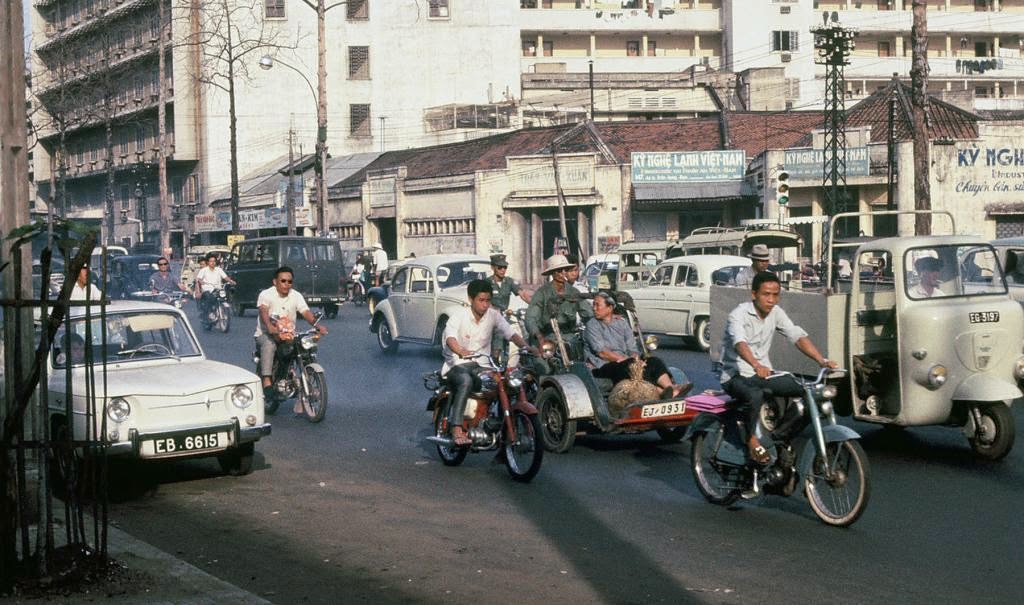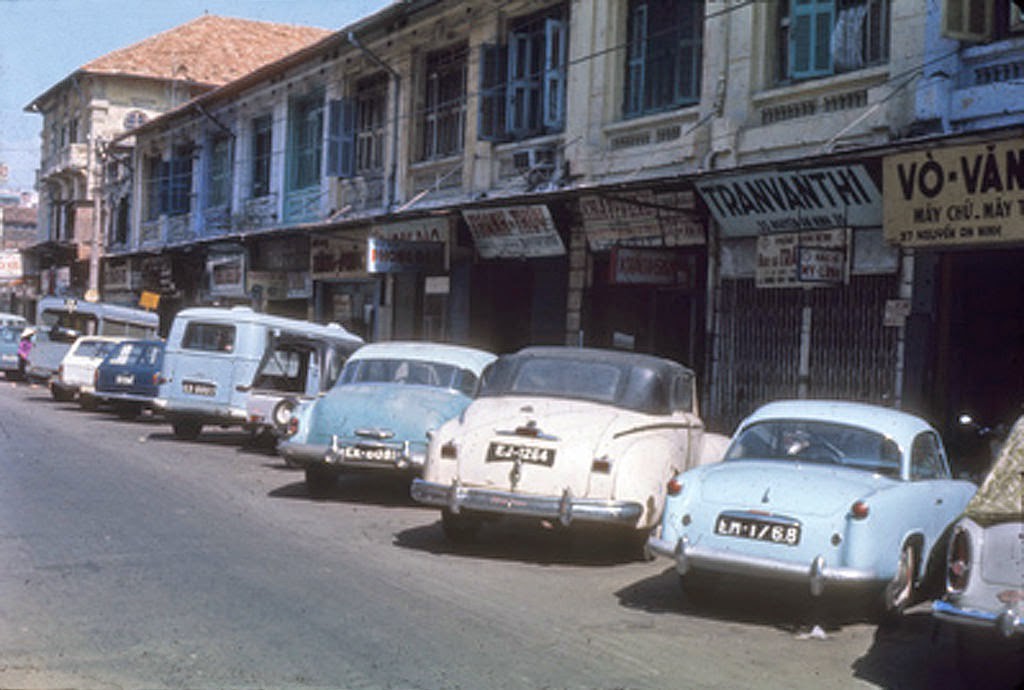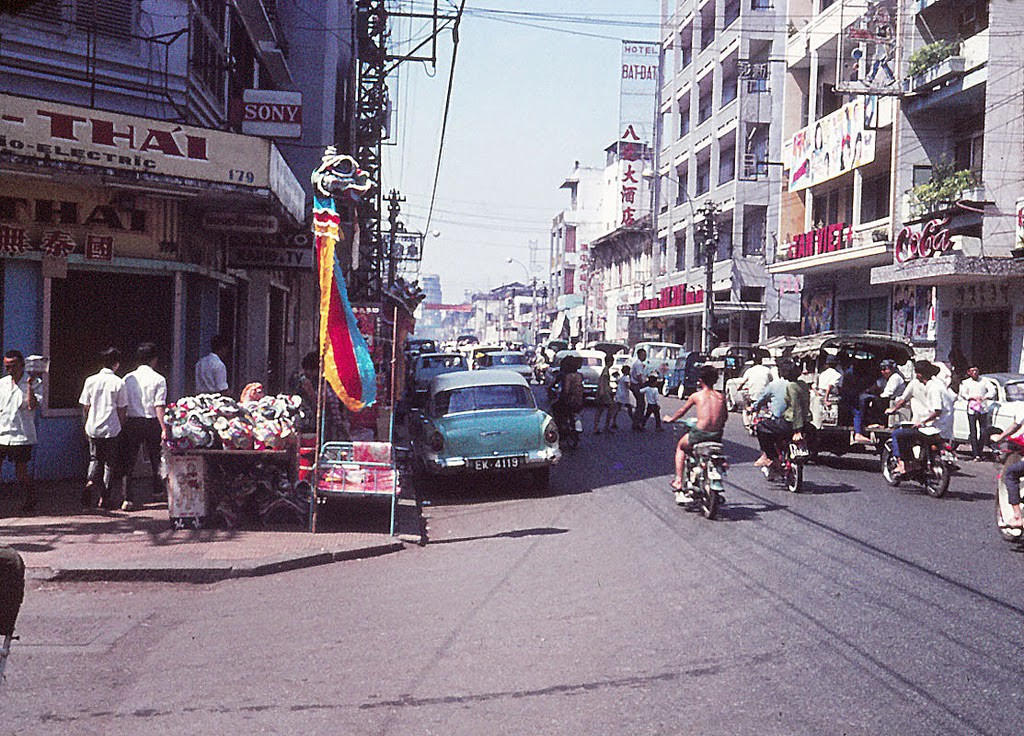Ho Chi Minh City formerly named and still also referred to as Saigon is the largest city in Vietnam. It was once known as Prey Nokor, an important Khmer sea port prior to annexation by the Vietnamese in the 17th century. Under the name Saigon, it was the capital of the French colony of Cochinchina and later of the independent republic of South Vietnam 1955–75. On 2 July 1976, Saigon merged with the surrounding Gia Định Province and was officially renamed Ho Chi Minh City after Hồ Chí Minh, although the name Sài Gòn is still unofficially widely used.
These interesting color photographs captured busy Saigon street scenes in the early 1970s, before the Fall of Saigon in late-April, 1975.
At the conclusion of the Vietnam War on 30 April 1975, the city came under the control of the Vietnamese People’s Army. Among Vietnamese diaspora communities and particularly the U.S. (which had fought the communists), this event is commonly called the “fall of Saigon”, while the communist Socialist Republic of Vietnam refers to it as the “Liberation of Saigon”.he capture of the city was preceded by the evacuation of almost all the American civilian and military personnel in Saigon, along with tens of thousands of South Vietnamese civilians associated with the southern regime.The evacuation culminated in Operation Frequent Wind, the largest helicopter evacuation in history.In addition to the flight of refugees, the end of the war and institution of new rules by the communists contributed to a decline in the city’s population.
In 1976, upon the establishment of the unified communist Socialist Republic of Vietnam, the city of Saigon (including Cholon), the province of Gia Ðịnh and two suburban districts of two other nearby provinces were combined to create Ho Chi Minh City in honor of the late Communist leader Hồ Chí Minh. The former name Saigon is still widely used by many Vietnamese, especially in informal contexts. Generally, the term Saigon refers only to the urban districts of Ho Chi Minh City.
Today, the city’s core is still adorned with wide elegant boulevards and historic French colonial buildings. The majority of these tourist spots are located in District 1 and are a short leisurely distance from each other. The most prominent structures in the city center are theReunification Palace (Dinh Thống Nhất), City Hall (Ủy ban nhân dân Thành phố), Municipal Theatre (Nhà hát thành phố, also known as the Opera House), City Post Office (Bưu điện thành phố), State Bank Office (Ngân hàng nhà nước), City People’s Court (Tòa án nhân dân thành phố) and Notre-Dame Cathedral (Nhà thờ Đức Bà). Some of the historic hotels are the Hotel Majestic, dating from the French colonial era, and the Rex and Caravelle hotels are former hangouts for American officers and war correspondents in the 1960s/70s.
It was approximated that 4.3 million tourists visited Vietnam in 2007, of which 70 percent, approximately 3 million tourists, visited Ho Chi Minh City.The city has various museums including the Ho Chi Minh City Museum, Museum of Vietnamese History, the Revolutionary Museum, the Museum of Southeastern Armed Forces, the War Remnants Museum, the Museum of Southern Women, the Museum of Fine Art, the Nha Rong Memorial House, and the Ben Duoc Relic of Underground Tunnels.
Found on: Vintage Everyday
